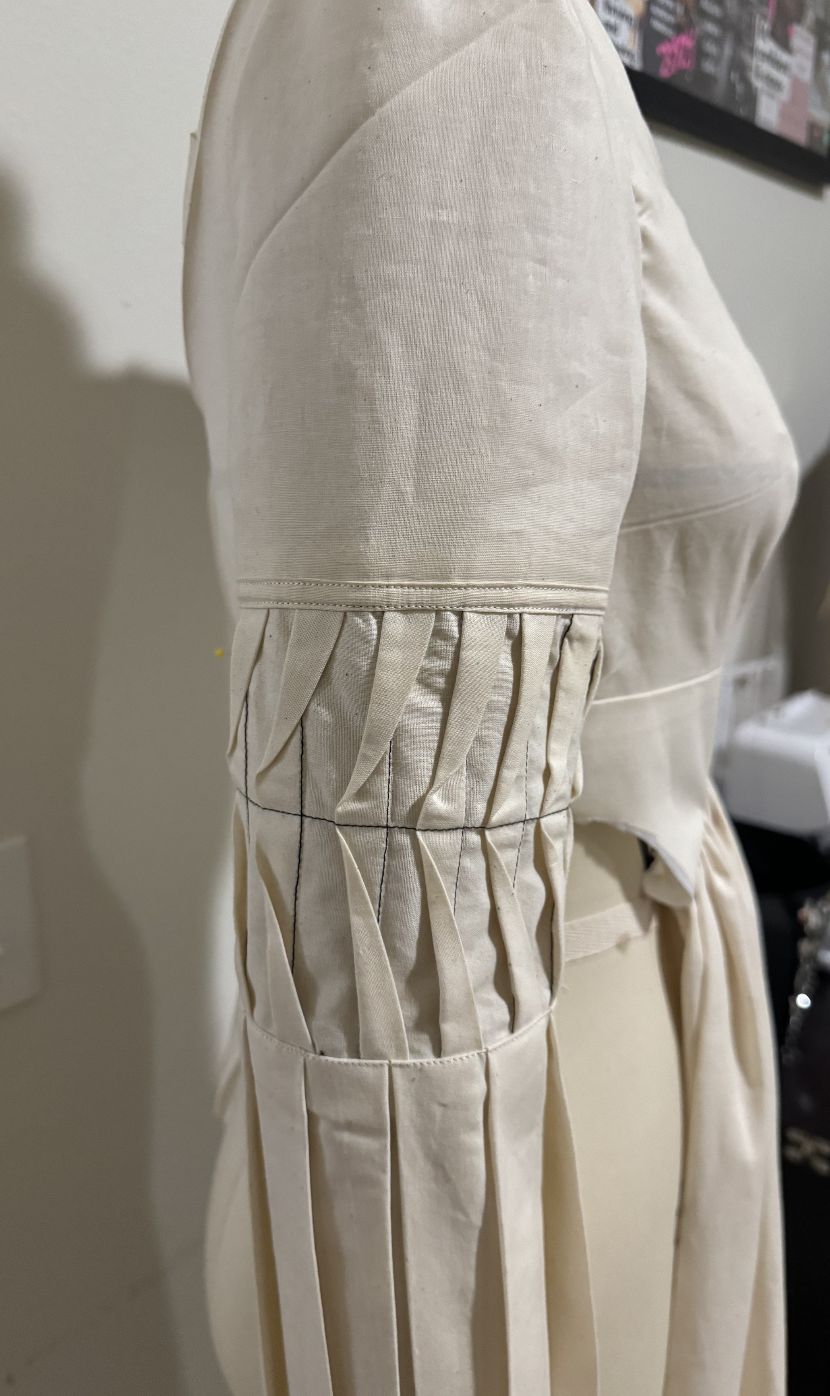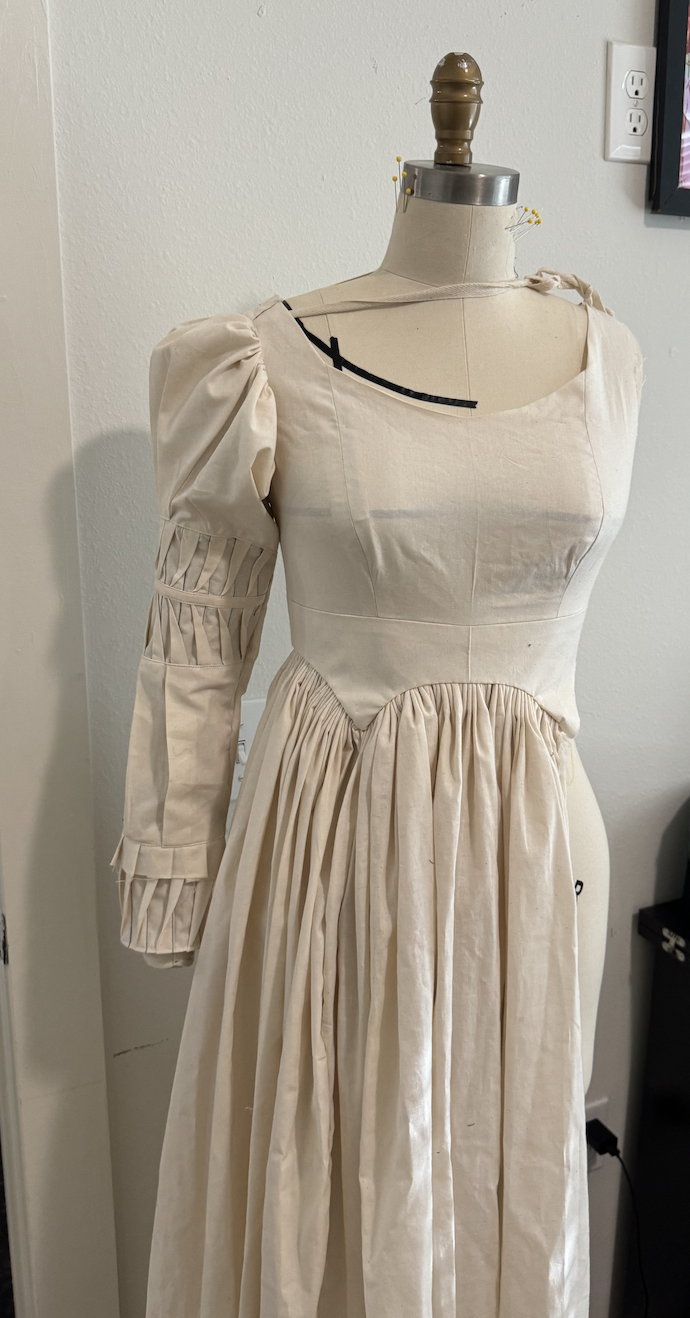
Romantic Dress
The garment showcases a thoughtfully engineered design, incorporating eight distinct prints that work harmoniously throughout the piece (digitally printed through the DTP Lab at LSU). Rich in detail, the dress is especially notable for its intricate sleeve construction. The semi-puff sleeves feature a sophisticated combination of pleating techniques: undulating pleats at the cuff and bicep, inverted box pleats at the shoulder and forearm, and tailored cuffs secured with hook-and-eye closures.
The skirt, made from eight gores, was meticulously gathered using ¼-inch hand-sewn cartridge pleats, each reinforced with three rows of thread to ensure precision and durability. The bodice is fully lined, turned out, and topstitched at the neckline for a clean, structured finish.
Additional finishing elements include a center-back hook-and-eye closure and a grosgrain ribbon at the empire waistline, providing structural support for the skirt’s weight. Both the hem and sleeve cuffs are bias-bound in a coordinating blue tape and slip-stitched on the reverse side for a refined, polished look.
Process
































Romantic Wedding Gown, c. 1837
My approach was deeply shaped by my experience conserving a nineteenth-century romantic wedding gown, dating back to 1837, from the LSU Textile and Costume Museum (LSU TCM) collection. This hands-on work allowed me to closely examine the garment’s construction and functionality, offering valuable insight into historical dressmaking techniques.
The gown, designed by Mary Williams Tucker, is part of the LSU TCM’s Valentine Museum donation. To explore more from the LSU TCM collection, click the button below
Result















